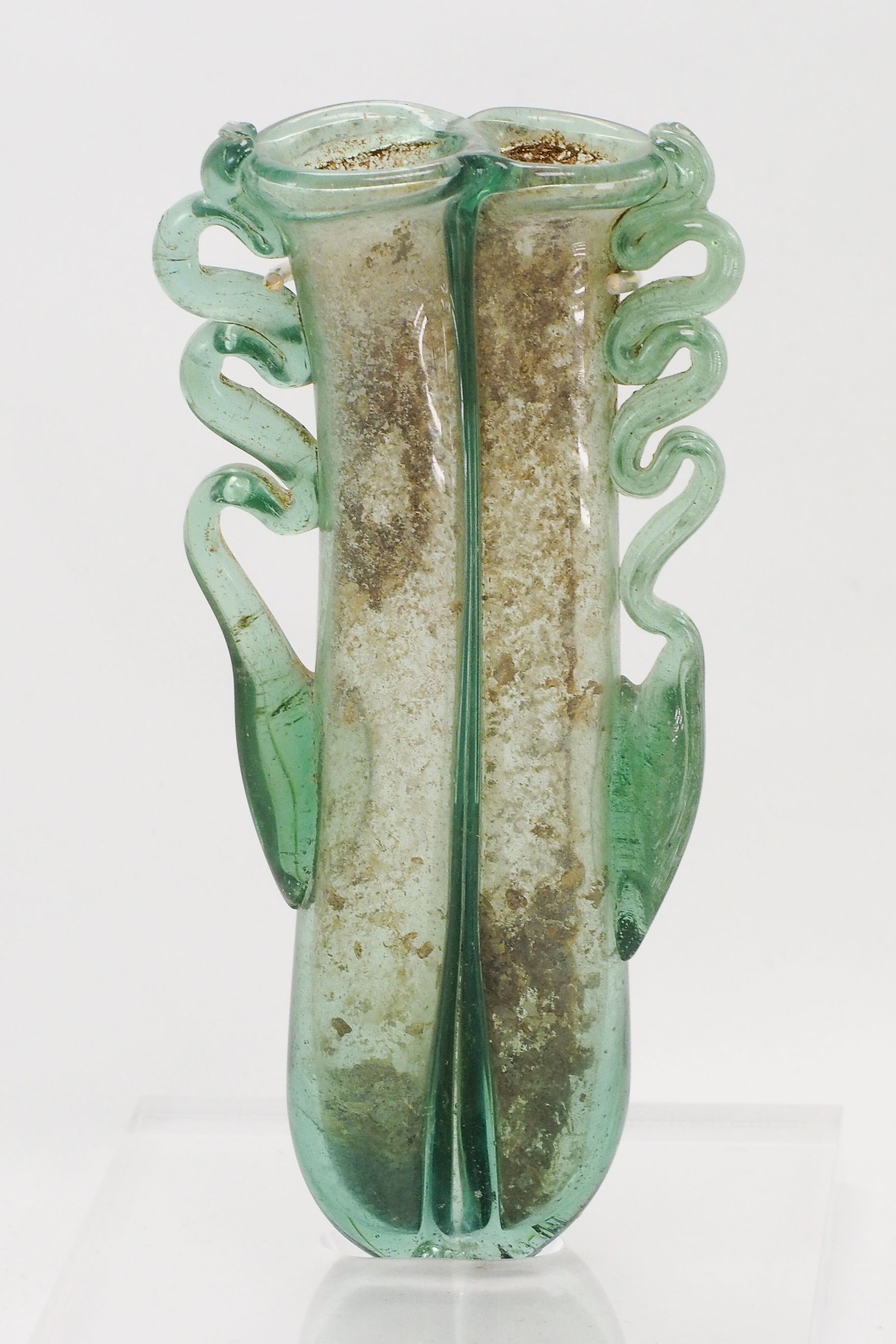Double Unguentarium
Name/Title
Double UnguentariumEntry/Object ID
11NE-Mi32-170Description
The thick tubular rim is folded outwards. The double tubed vessel was formed by pinching a cylindrical parison to form a vertical diaphragm along the bodies. The walls of the bodies are vertical, curving at the base. Just above the plain base, a thick trail was applied to the body of each tube and drawn vertically attaching twice to the body on one side and three times on the other. The curved attachments create three loops on each handle which are cut off at the lip. The vessel is intact with minor incrustation, dirt, and debris visible inside the bottle.Use
CosmeticContext
This vessel was likely used as a kohl tube. Kohl was most commonly a black cosmetic powder made from pulverized lead ore. Another popular kohl pigment in ancient Egypt and the Near East was green, made from malachite ore. Kohl was commonly applied as a powder or paste with a rod applicator; some glass vessels have even been found with their applicator rods made of bronze, glass, or bone. These vessels could also be sealed by stoppers made of wax or linen. As a cosmetic, kohl was applied by both men and women to the eyebrows, eyelashes, or to outline the eyes, giving a smoky eye appearance. Kohl was not only used for cosmetics but also as a medical salve for eye infections. Kohl is still used in modern times, mostly by cultures in North Africa and the Middle East. The earliest kohl tube first appeared in the third century CE as a singular tube. In the fourth to sixth centuries CE, kohl tubes popularly consist of more than one tube, typically two. Most of the multiple kohl tubes appear with ornate glass trails, applied loops to the side of the body, and ornate basket handles. Throughout the Byzantine period, handles became increasingly complex leading some to appear bulky. However, the handles were likely used to suspend the vessels as many appear without bases.Made/Created
Date made
300 CE - 500 CETime Period
Late AntiqueEthnography
Culture/Tribe
Near Eastern - Syro-Palestine

